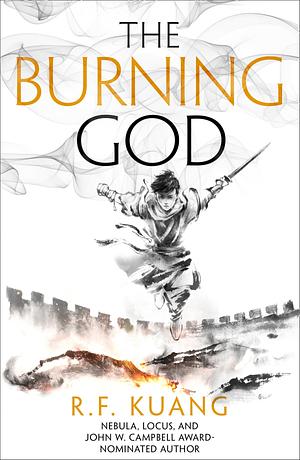Review: The Burning God
So it has been three or four years since I read the first two books in this series, which definitely impacted my experience of reading it a bit – I had to look up summaries of what had already happened so I wouldn’t feel completely lost, and even then there were definitely still things I forgot, like how exactly the magic system worked. That said, I thought this was a strong ending to the trilogy.
It was especially cool to read it after having taken a couple of Chinese history classes, which gave me the context to understand the historical figures and events the series is based on. Rin being representative of Mao Zedong allowed for a really interesting exploration of the forces that lead to leaders becoming larger than life and abusing power in the name of the people. And while avoiding spoilers, I thought the ending hit just about the perfect balance – it doesn’t seek to redeem Rin, but it acknowledges her humanity and gives a sense of hope in the face of the insurmountable odds her world faces.
One thing that I found a bit off reading this book – again, with the context of a few Chinese history and language classes – was some elements of world building. In a lot of ways Nikan is a very straightforward fantasy version of China. Obviously because it’s a fantasy world, names aren’t necessarily derived from a specific real-world language. Except…some of them are? Some names are ones that could absolutely be found in Chinese – Su Daji, for instance (in fact, Da Ji/妲己 was actually apparently the name of the favorite concubine of the last ruler of the Shang dynasty – I went down a rabbit hole here – and Su written as 苏, 肃,宿, or 粟 are all reasonably common last names). But where Chinese uses a very consistent naming pattern in which all names are combinations of actual words, there’s no consistency to where names seem to be coming from here. Which I suppose is also true in a lot of fantasy worlds inspired by Western societies, so maybe it isn’t a huge deal. It just felt very inconsistent to me. And then there’s Mt. Tianshan, which is a real mountain in real life China, just…stuck into Nikan? That in particular was really confusing to me. Again, not a huge deal. Just a bit of internal consistency missing.
Ultimately, though, I don’t think any of that is really the point of the book. The point is exploring Rin’s character changes as she experiences horror after horror and betrayal after betrayal (along with a couple of foils). And in that regard, I think it works very well.

Comments
Post a Comment